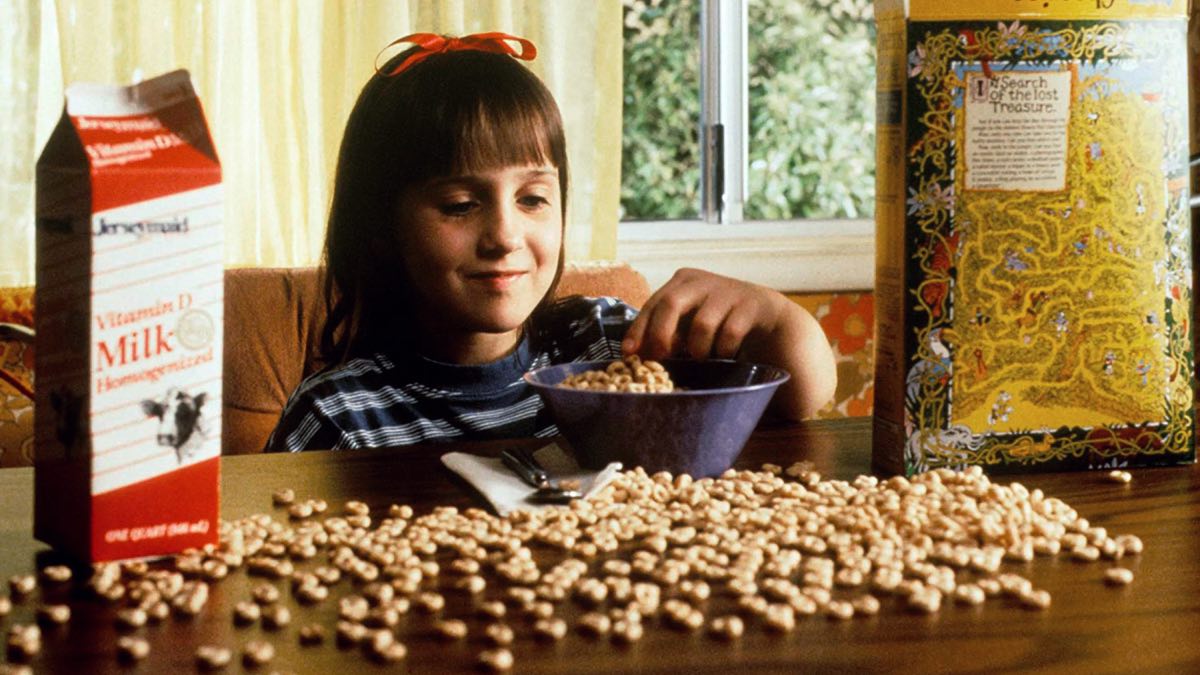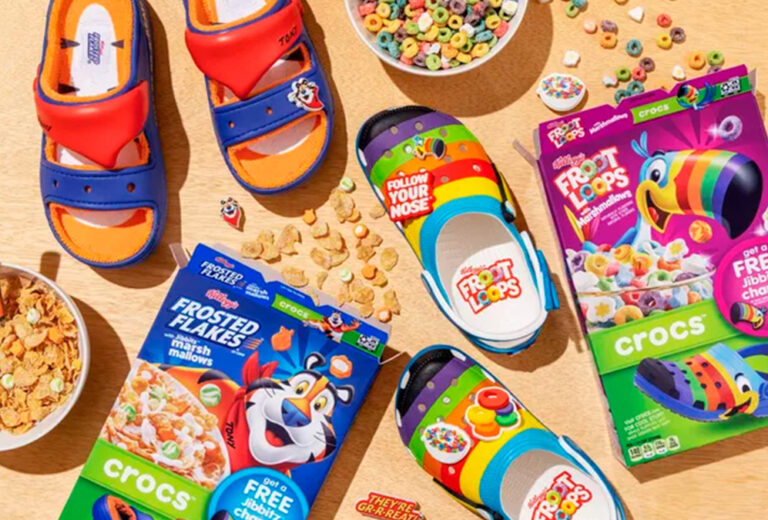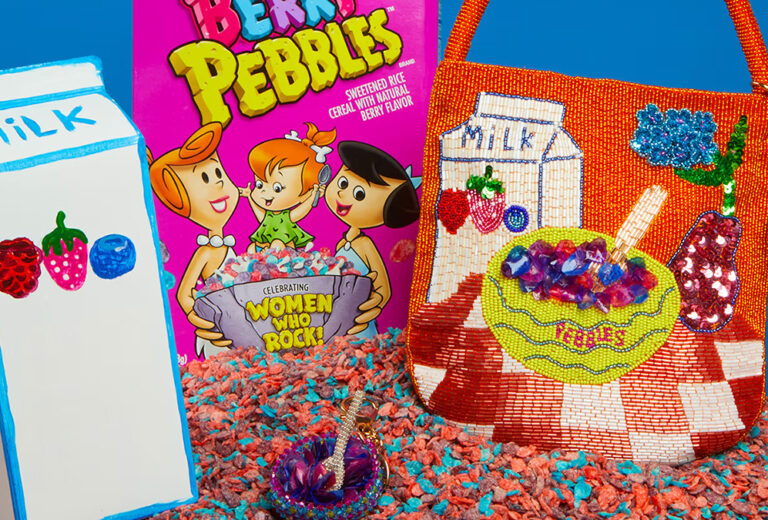Click here to read the Spanish version.
Although they are one of the most recurrent breakfasts, especially for children, cereals are not always as healthy as they seem, because some of them have a high level of sugar, fat or salt. To find out what type of cereals (and brands) are the healthiest option, the OCU has studied the labeling of more than 300 cereals to report on their nutritional composition and see which ones would really be ideal to start the day in a healthy way.
To better delimit all the information, the study has been divided into six groups: oat type cereals, sweetened cereals, filled cereals, corn flakes, Linea type cereals and muesli. The main conclusion reflected in the OCU analysis is that 38% of the products studied have sugar levels above 22%, while only 15% have sugar levels below 5%. Below, we specify the data for each type of cereal and which are the best brands according to the OCU.
Oat cereals
In this section, 33 references have been studied. In general, it is a healthy product and, on average, it provides 373 kcal per 100 g of product. They have a good contribution of carbohydrates (60%), but fall short in protein (12%) and fiber (10%). As for sugar content, the range is quite wide depending on the brand: from 0.7% to 17%. Most of the references get an A or B on the NutriScore. They are therefore above acceptable. As for products highlighted by the OCU as the best cereals in this category would be oat bran from Auchan in Alcampo and Hacendado in Mercadona.
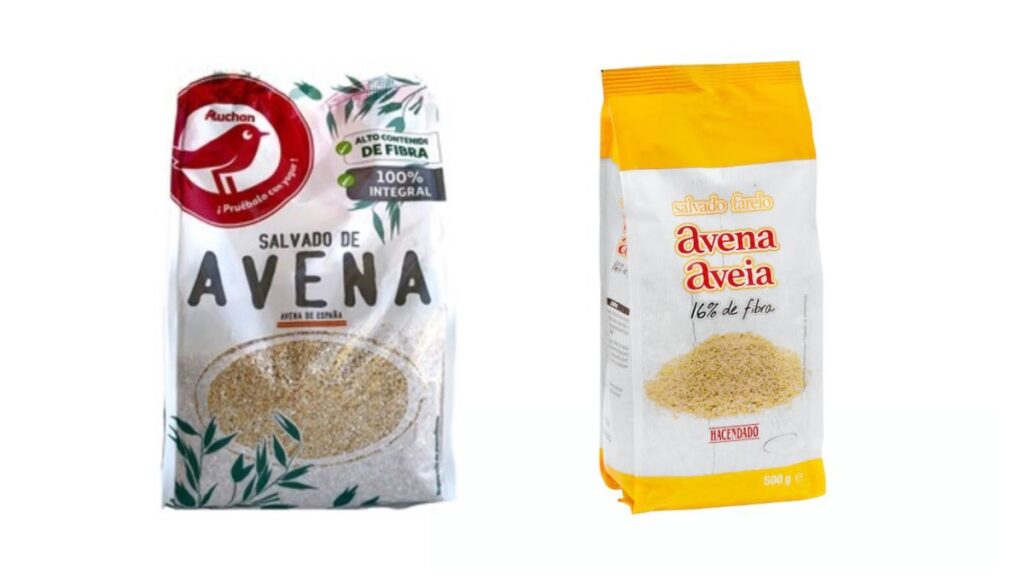
Sugared cereals
In the sugary cereals section, it was to be expected that their content would be high in sugar. On this occasion, these are the products most aimed at children and, therefore, where we should focus more attention. The average is 25% sugars. On the other hand, the saturated fat content is not a problem. Although not everything is negative, the study determines that there are five cereals (three chocolate and two with honey) that have a NutriScore A. Leading as the best option is Origens’ Crunchy Spelt with cocoa, because it has no additives or flavorings.
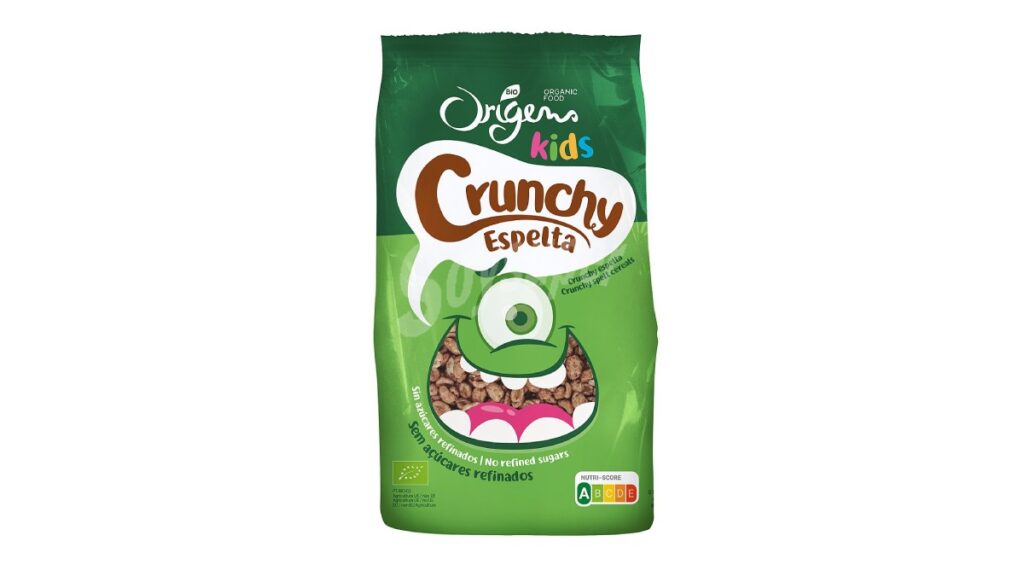
Filled cereals
As they are filled, almost always with milk cream or chocolate, they are one of the least healthy options, reaching an average sugar level of 27%, which is very high. In addition, they are also high in saturated fats and low in fiber. Two-thirds of the products analyzed have a NutriScore D and E. Although the OCU points out some healthier options such as Eroski’s Crunchy Pillows and Kölln’s Crispy Oatmeal Pillows with 70% whole grain cereals.
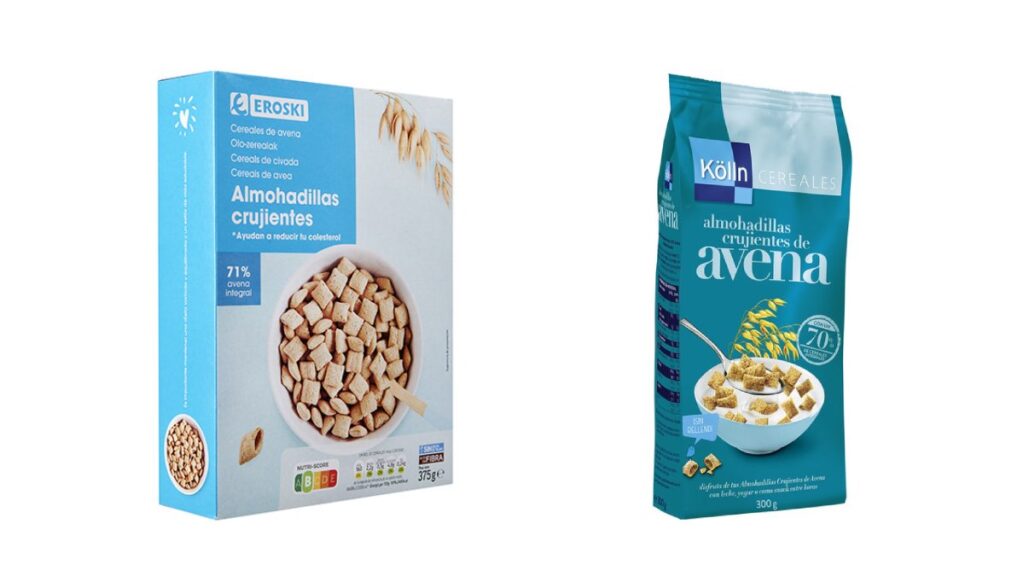
Corn flakes
What is known as cornflakes is another of the simpler, more classic and seemingly healthy categories. The problem here is the salt, which many have more than 1.25% salt. Even though the added sugar content is only 6.4%. As for the NutriScore, here, depending on the brand, it ranges from A, B and C. If there is one product to highlight, the OCU opts for Nat’s Delice flake and Consum Eco’s wheat and spelt flakes.
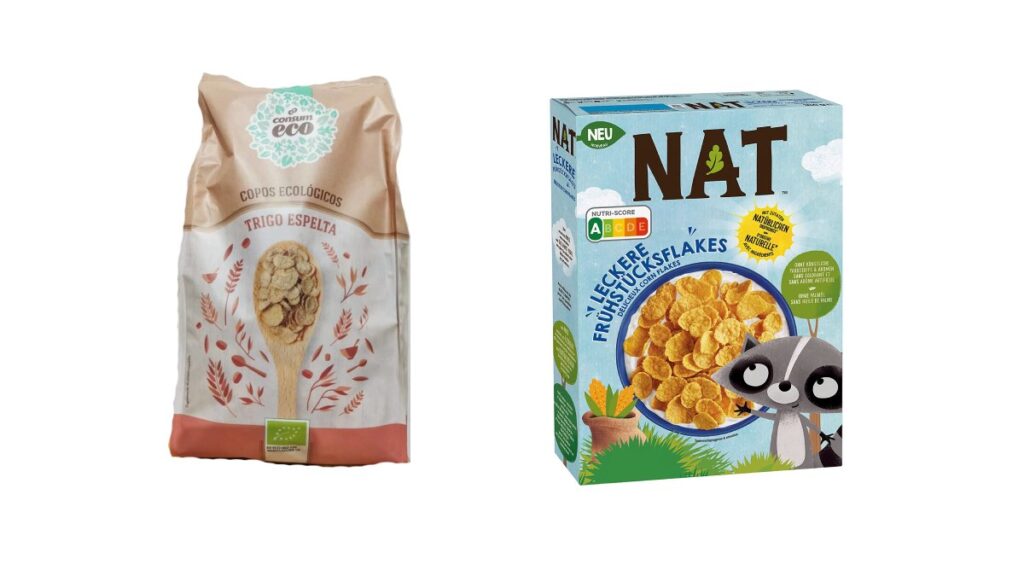
Cereal type Linea
Their public is more adult and they are always sold with a healthy image, to keep in line, etc. But they are not the least caloric (they have an average of 387 kcal per 100 g; more than oat or cornflakes). In addition, they usually have quite a lot of added sugar, an average of 15%, which increases if they have chocolate chips or fruit. On the other hand, there are some products that have NutriScore A, mainly because of their high fiber content. In that case, the best options for the OCU would be the whole wheat bran of Hacendado in Mercadona and the Sticks of Carrefour Fibra.
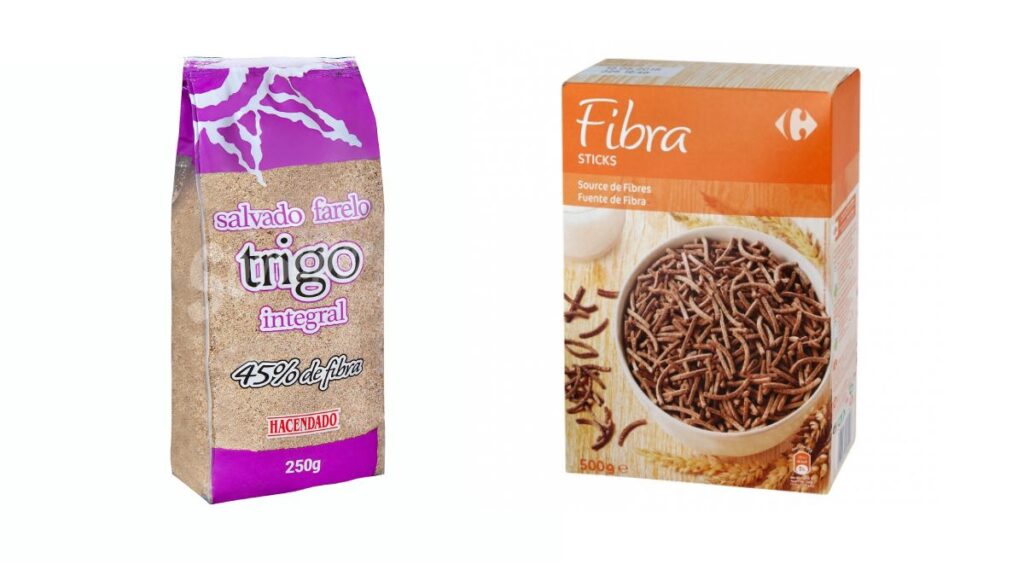
Muesli
Muesli is also given a healthy connotation, but in reality it is not so. According to the OCU it is easy to find muesli on the market – one in four products is – but it is not so easy to find one with a NutriScore A. This is due to its high sugar content (19% on average) and high saturated fat content (5%). Only half of the products studied would exceed the average. Out of all of them, oat muesli with nuts from the Kölln brand and granola with low sugar content from Mercadona’s Hacendado brand stand out.
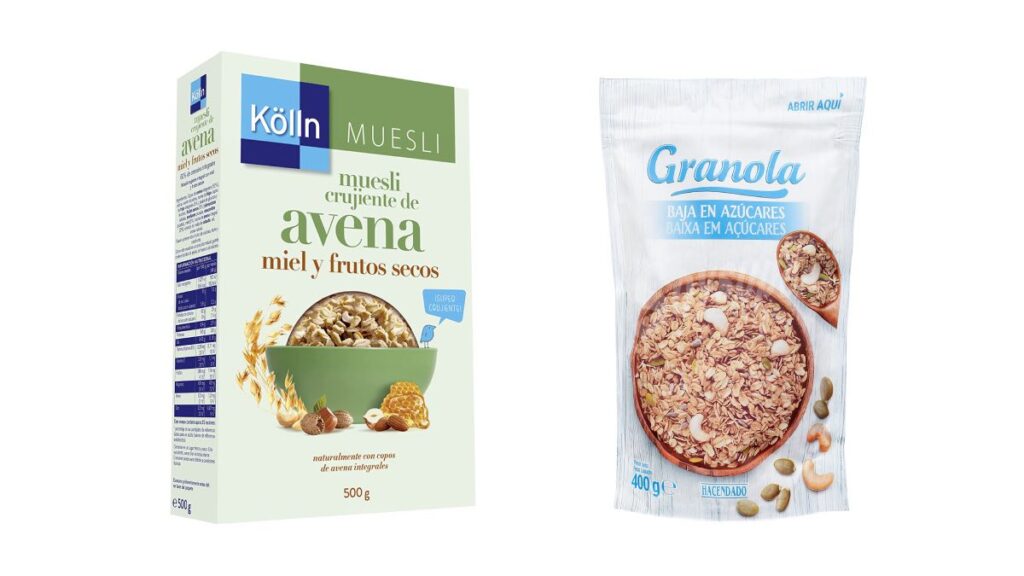
After all this information, will you decide to change your breakfast cereal choices for healthier ones according to the OCU study?

